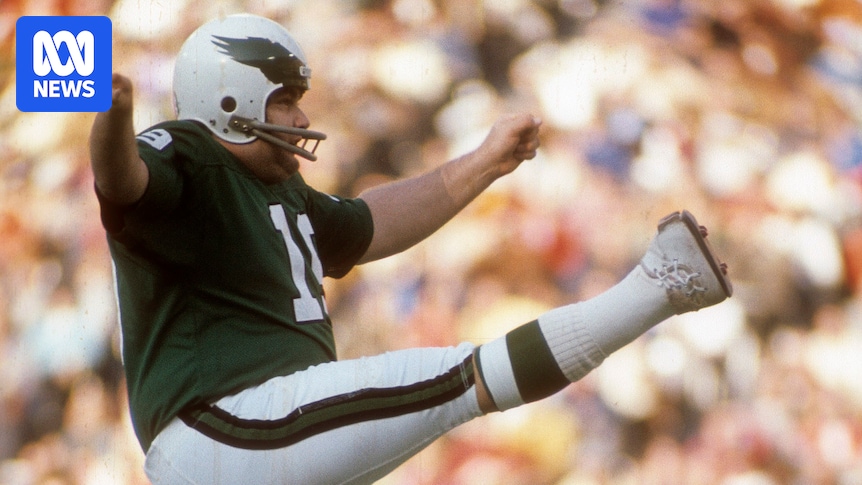
Even 55 years later, the moment remains etched in the annals of sporting history as one of those otherworldly, scarcely believable feats. The New Orleans Saints were struggling, having just dismissed their coach after a disastrous start to the 1970 NFL season. Yet, somehow, they managed to keep pace with the Detroit Lions in an early November clash that resembled a David vs. Goliath battle.
With only seconds remaining, Saints kicker Tom Dempsey had a shot at a miracle. Known as one of American football’s finest, even Dempsey seemed to face an insurmountable challenge. The league record for the longest field goal was 56 yards, but Dempsey’s attempt would be from 63 yards. With a casual, barely three-step walk-up, his contact was true and straight.
Dempsey’s kick was a resounding success, setting a record that would stand for over 40 years. The stadium erupted as teammates and fans celebrated the unbelievable achievement. What made this moment even more remarkable was that Dempsey accomplished it with only half a kicking foot.
The Few Men with Disabilities in Mainstream Sports
Born without toes on his right foot and fingers on his right hand, Dempsey is among the few men with disabilities who have left a mark on elite mainstream sports. This contrasts sharply with elite women’s sports, where representation of disabilities and neurodivergence has become more common in recent years. Meanwhile, men’s sports continue to lag behind in areas such as LGBTQIA+ participation.
A decade before soccer player Carson Pickett became the first player with limb difference to represent the US women’s team, Spaniard Álex Sanchez was blazing his own trail in elite men’s soccer. In 2009, Sanchez became the first player with limb difference to play in La Liga, Spain’s top football league. Having retired from professional football in early 2025, Sanchez considers his role in providing representation for children and athletes with disabilities as his most meaningful achievement.
Challenges and Triumphs
For much of his early career, Sanchez’s relationship with his disability was fraught. “The only problem I had was tying my boots when I was a kid,” Sanchez told ABC Sport. “I actually didn’t realize I had a disability — the disability wasn’t important, I was a kid like the rest of them. The only thing important was to score the goals.”
As a teenager nearing his professional debut, Sanchez began to wonder how his impairment would be perceived by the football-obsessed Spanish public. When he was named in Real Zaragoza’s match-day squad for the first time, he was shocked by the media frenzy. Despite being a relatively unknown 19-year-old, Sanchez found himself on the front page of a Spanish sports newspaper with a daily readership in the millions.
“I was like, ‘what the f*** is this?’,” Sanchez said. “It was crazy, it was not as sensitive as I wanted. As a 19-year-old boy, you are not ready to deal with some things.”
After that, media attention became overwhelming, and Sanchez decided to stop engaging with the press. “All of their questions related to disability and some of them were not the way I wanted to speak about disability,” Sanchez said. “Honestly, I felt like a monkey in the circus.”
Dempsey’s ‘Sledgehammer’ Shoe and Its Controversy
Following his record-breaking NFL kick, Dempsey experienced similar alienation from his narrative. Known for kicking barefoot in college, Dempsey had commissioned a bespoke football boot upon entering the NFL. The shoe, worth nearly US$2,000 in today’s money, was designed to accommodate his unconventional foot and featured a nearly 5-centimeter block of leather at its front.
Wearing this boot, Dempsey scored his career-defining three-pointer, leading to questions about the fairness and legality of the shoe. Dallas Cowboys general manager Tex Schramm was a vocal critic, suggesting Dempsey had an “unfair advantage.” Despite the legality of the shoe being cleared by the NFL, and Dempsey’s inconsistent kicking with it, the controversy persisted.
In 1977, the league implemented the “Tom Dempsey rule,” requiring players with artificial limbs to wear footwear conforming to standard dimensions. No evidence supported claims of an unfair advantage, and an ESPN Sport Science report suggested the shoe actually hindered Dempsey’s kicking ability.
Dempsey, who passed away in 2020, never agreed with the speculation surrounding his kick. “Unfair, eh? How ’bout you try kicking a 63-yard field goal to win it with two seconds left and you’re wearing a square shoe,” Dempsey famously retorted.
The Importance of Role Models in Elite Sport
Away from the media spotlight, Sanchez’s early career saw him moving between Spain’s top divisions. During these years, one moment stayed with him. “The day before my debut, a kid with a disability like mine came to my hotel to say thank you — thank you for being an inspiration, thank you for playing in La Liga,” Sanchez recalled.
This encounter inspired Sanchez to become an outspoken disability advocate. “I knew I couldn’t be shy, I couldn’t stop speaking about disability, I had to do something — because there’re a lot of kids like him,” Sanchez said.
By the time Sanchez moved to Australia to play for Sydney Olympic, he was already a vocal advocate. His success in Australia, both on and off the pitch, was a testament to his resolve. “It was the best time of life, playing for Sydney Olympic,” Sanchez said. “There wasn’t a bad day in Australia.”
After returning to Spain, playing in India, and completing four university degrees, Sanchez retired in early 2025. Reflecting on his career, Sanchez remains proud of his achievements in La Liga despite his disability.
“It was the most positive point of my career, playing in La Liga with my disability,” Sanchez said.







